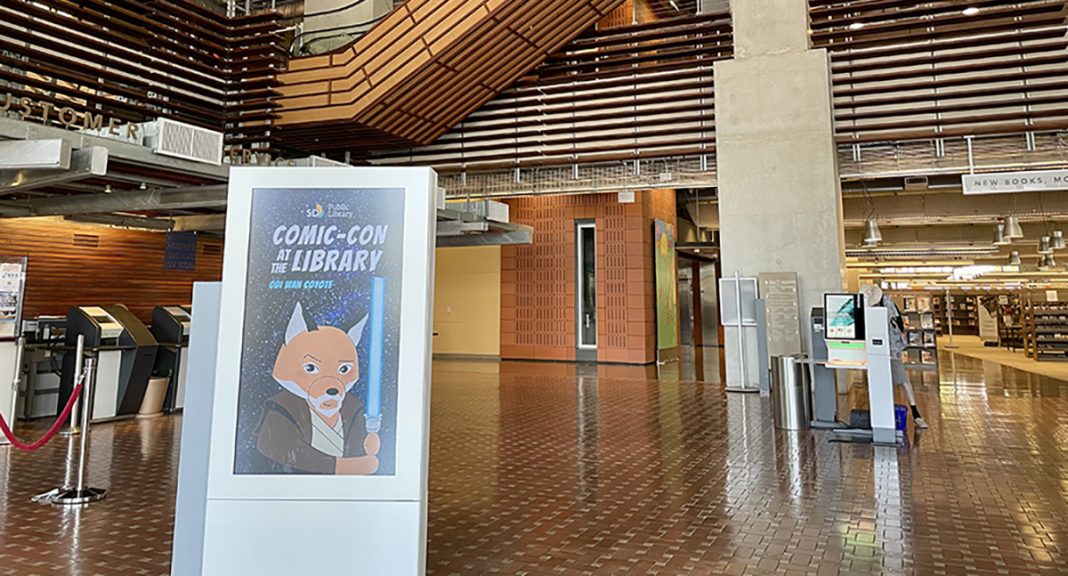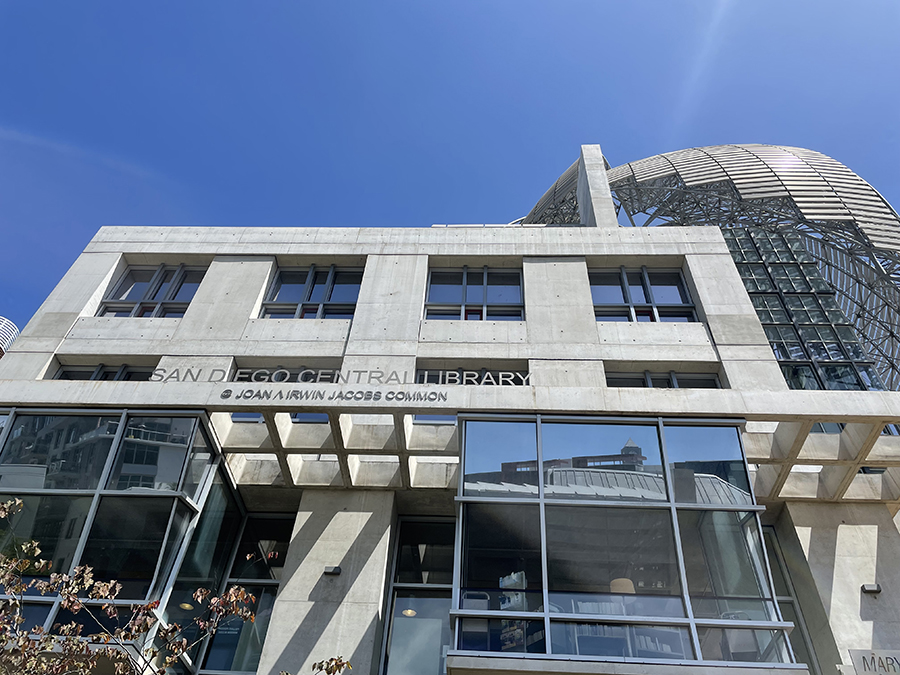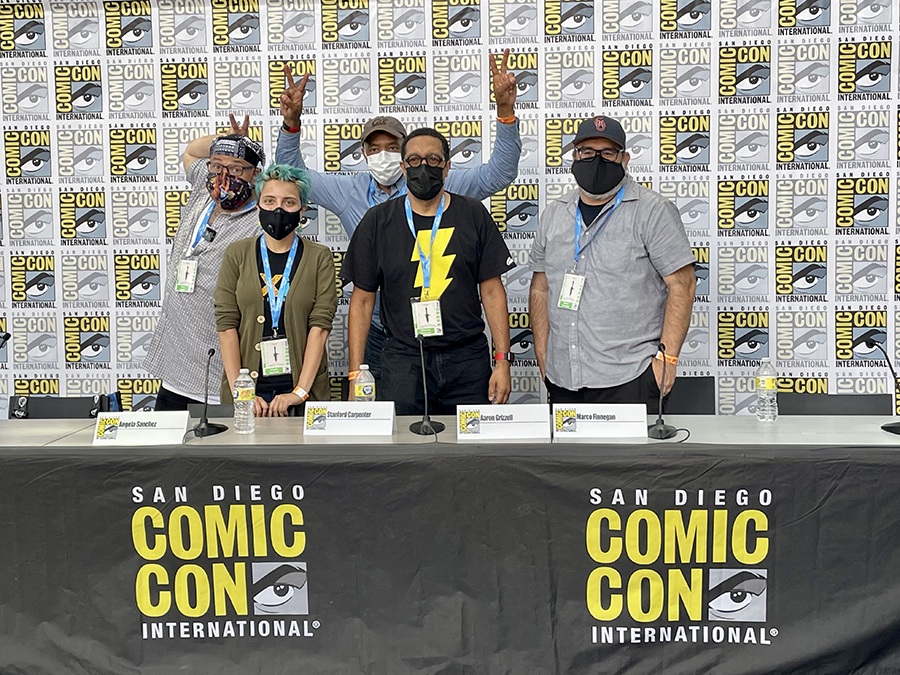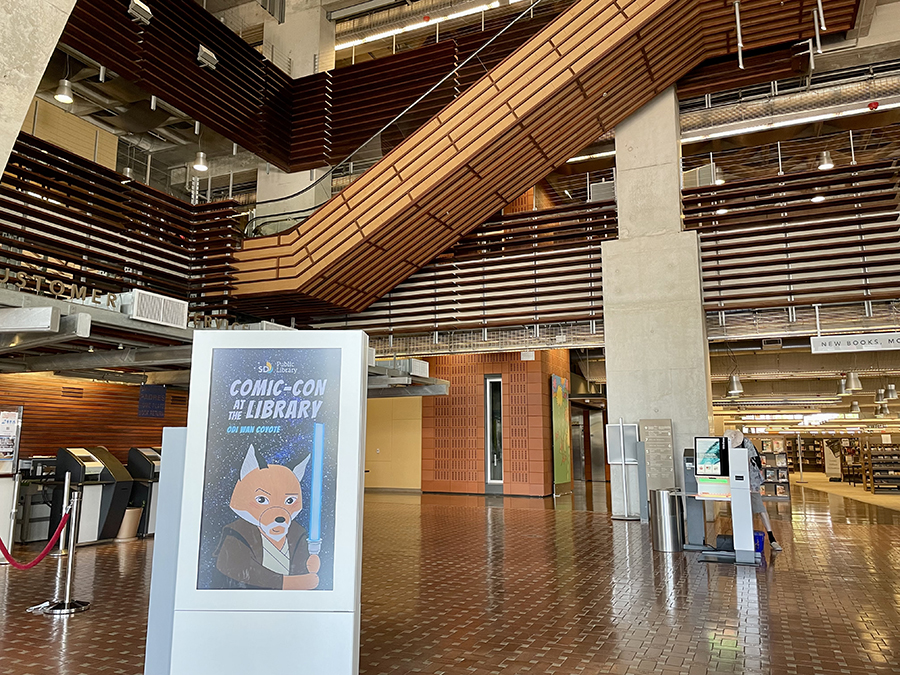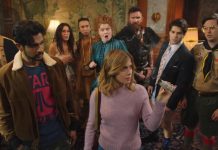By Ani Bundel
Most people think of San Diego Comic-Con as an event dedicated to major announcements for science fiction, fantasy, and comic franchises, from Marvel to DC Films and HBO to Netflix. But after 50+ years of bringing in major yearly tourism, a massive boost to the economy, its own museum, and other institutions, it’s also a significant part of the local community. That’s embodied in its evolving relationship with the San Diego Central Library, where a four-day lineup of panels is aimed at educators and librarians on how comics reach the upcoming generations of readers.
Thursday’s lineup opened with how comics can be used to support and connect to different marginalized groups of kids. The three-hour block began with “How to Support LGBTQIA+ and Neurodiverse Communities Through Comic Books.” The panel of creators and counselors talked through their experiences using comics, writing, and art to encourage creative thinking and build a community inclusive of those who don’t always think and communicate the way the adults around them might expect. The panel also had a lively discussion on the difference between neurodivergent versus neurovariant and how it was essential to meet kids where they are.
That dovetailed directly in the next panel, “Raising Fankids,” and the difficulty, especially in the past few years as virtual communication has become the dominant norm among Gen Z, in helping kids become adequately socialized and find their tribes. Teacher Pasquel Piro hosted an all-parent-and-educator panel, discussing, among other things, how to make growing up a positive experience in an all-virtual environment and to keep in mind that for a significant slice, this is becoming the only way of life they’ve known.
There was also a spirited discussion about using the internet and social media and the toxic pitfalls. The panel agreed that this was one of the most intimidating things for parents, as these were tools that didn’t exist in the form they did now when Generation X and older Millennials were growing up. The key was modeling positivity and responsible usage, the same way one might teach a child to ride a bike. Panelist Alissa Piro said she starts and ends in the positive, no matter the situation.
Speaking of the positive, in the panel that followed, “Diversity and Comics: Multimodal Media and Comics,” Aaron Grizzell, the executive director of The NorcalMLK Foundation, led a fascinating discussion on comics’ growing respectability and their importance in speaking to black and brown youth. Dr. Stanford Carpenter, Chairman of the Board of Directors for the Institute for Comics Studies, pointed out that the younger generation makes comic stories that speak to the moment. However, the older ones ahead of them “greenlight” it as culturally significant.
In 50 years, comics have reached a new level of respectability. Panelist Angela Sanchez, part of the vanguard turning those comics into televisual narratives, pointed out that webcomics are the latest place where barriers are being broken for non-white, non-male, non-straight creators. It’s where diverse voices are flourishing in the wake of the shift away from paper and printed editions in post-COVID times.
Marco Finnegan talked about his experience getting his comic work picked up via social media in this COVID era. His newest work, Lizard in a Zoot Suit, was borne of having never seen kids like himself (apartment dwelling, single parent raised). His cartoon tells an under-told real-life story of the 1940s Los Angeles Zoot Suit Riots, highlighting the experiences of Mexican-American families struggling to survive in the US. By couching it in science fiction terms with anthropomorphic animals, he’s able to talk about his heritage and put the stories of kids who have never seen themselves represented, but in a way that sidesteps having it pigeon-holed and read more as a universal experience.
Dr. Carpenter closed with the discovery that one could predict precisely what TV programs people watch by their perception of how much crime there is and who commits it. Driscoll concluded by reiterating this is exactly why having comics that can address these stories and put positive, powerful stories of underrepresented communities in our culture is critical. The profound importance of the diverse stories and the outreach that comics bring to our culture cannot be understated.
At SDCC, the San Diego Central Library is where to find it, just like our local libraries are where we find it at home.
Miss any of The Beat’s earlier SDCC ’22 Coverage? Find it all here!


